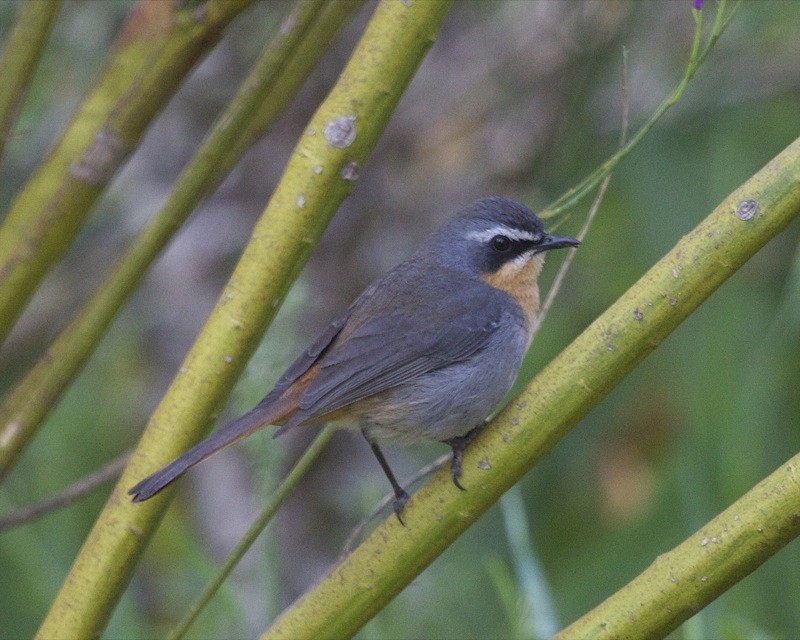Cape Robin-chat
A species of Robin-chats Scientific name : Cossypha caffra Genus : Robin-chats
Cape Robin-chat, A species of Robin-chats
Botanical name: Cossypha caffra
Genus: Robin-chats
Content
Description People often ask General Info
 Photo By Lip Kee , used under CC-BY-SA-2.0 /Cropped and compressed from original
Photo By Lip Kee , used under CC-BY-SA-2.0 /Cropped and compressed from original Description
The sexes are similar. The Cape robin-chat measures 16–17 cm from bill tip to tail tip and weighs 28 g. The adult's upper parts are grey, with the mantle and secondary feathers tinged brownish olive. The blackish lores and ear coverts are separated from the crown by a prominent white supercilium. The chin, throat, central breast, rump, upper tail coverts and outer tail feathers are orange. The breast plumage moults to a deeper orange in colour for the non-breeding season. The central tail feathers are greyish-brown, and obscures the bright rufous outer tail feathers when the tail is closed. The belly is pale grey to white, and the undertail coverts buffy. The short, black bill is fairly straight, but with a slightly down-curved upper mandible. The legs and feet are black, and the eye is brown. Juveniles have tails like the adults, but lack a supercilium. They are dark brown above and buff below, heavily marked with buff on the upper parts and grey-brown on the breast. The legs and feet are pinkish grey, and unlike other robin-chats, the soles of their feet are yellow. Immatures are like adults but retain some buff-tipped greater wing coverts. 
Size
17 cm
Colors
Brown
Black
Bronze
Gray
White
Orange
Life Expectancy
16 years
Nest Placement
Shrub
Feeding Habits
Cape Robin-chat primarily forages on or near the ground, consuming invertebrates, small frogs, and lizards among leaf litter or scrub. It also eats fruits and seeds, gleaning from foliage or ground. Occasionally, it hawks insects mid-air or gleans from leaves and branches.
Habitat
Cape Robin-chat inhabits dense vegetation across southern and eastern Africa, from forest edges and woodlands to suburban gardens. It thrives from sea level up to montane areas at 3,000 meters, particularly around bamboo fringes, and adapts to human-altered landscapes like gardens and plantations. The bird avoids arid zones but utilizes riparian zones in drier south-western regions.
Dite type
Omnivorous
People often ask
General Info
Feeding Habits
Bird food type
Behavior
It moves about singly with a hopping gait, and often perches in prominent positions. It also roosts singly up to 3 metres aboves ground, in dense cover. The tail is regularly jerked up to an angle of 60 degrees, and upon alighting it may flick the wings and rapidly fan the tail. It bathes daily, even in tide pools. 
Scientific Classification
Phylum
Chordates Class
Birds Order
Perching birds Family
Old world flycatchers Genus
Robin-chats Species
Cape Robin-chat